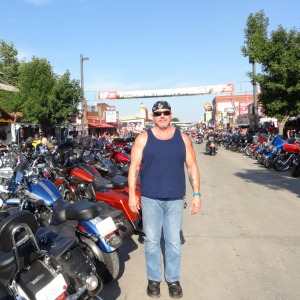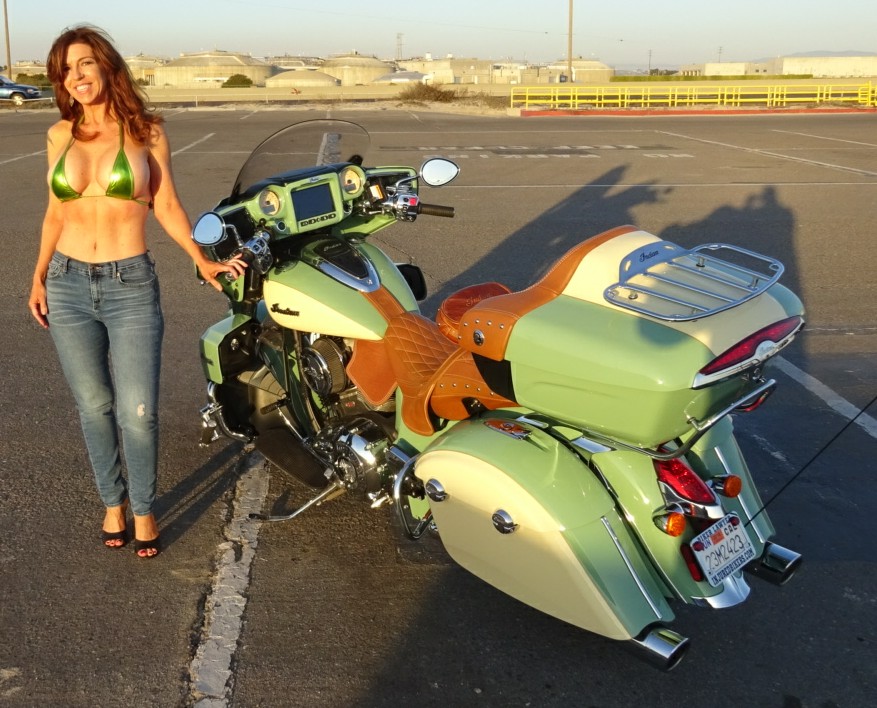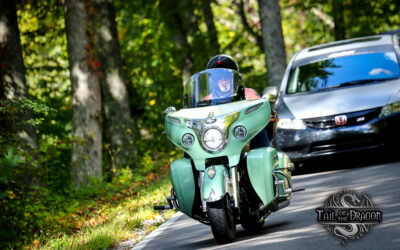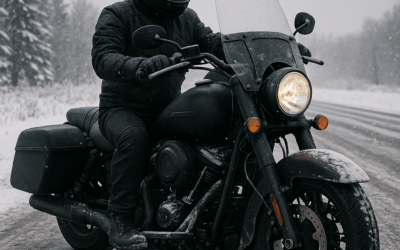I read an article this weekend in the San Jose Mercury news about a tragic motorcycle accident which took the lives of a biker and his passenger. Apparently the rider of his new Harley Davidson motorcycle rode through a turn too fast, and slammed into a slow-moving big rig truck, killing himself and his passenger. You can find the article here.
I receive daily reports of motorcycle accidents throughout the nation. Many motorcycle accidents are caused by motorcyclist losing it in turns, which results in either the motorcyclist crossing the median and striking an oncoming vehicle, or losing control and crashing their motorcycle.
The one thing you should never do while riding your motorcycle, is to attempt to pass another vehicle in a turn. The below video courtesy of Youtube.com shows what can happen when you attempt such a stupid stunt. (I am not going to comment on the idiots in the cage who should have pulled over to help the fallen rider, or their assumption that they would have been beat up by the bikers if they pulled over. That is not the purpose of this article.)
http://www.youtube.com/watch?v=pJLhSWUBnwE
All of those who ride motorcycles have made the mistake of taking a turn too fast. Anybody who says they haven’t is lying. Depending upon how fast you were going, the traffic conditions, and the type of turn that you are in, you may have even experienced the feeling of panic knowing that you’re going to cross the median, or you might not make it through the turn.
I am not the Holy Grail when it comes to motorcycle safety. I can tell you flat out that I have taken turns too fast and crossed the median, especially in Canyon roads. I have seen friends, brothers, and strangers do the same thing. Luckily for me, there was not oncoming traffic at the exact moment that I crossed the median; if there was I could have been roadkill as well as my friends.
What you do, and how you react in this type of circumstance can mean the difference between life and death.
On the Internet you will find many motorcycle riding safety manuals. I have posted a few links to motorcycle safety articles in this Blog. You can find them by searching for motorcycle safety articles in the search box. A basic MSF training course will also teach you the basics of riding your motorcycle through turns.
There are many different theories about how you should ride your motorcycle through turns. It is said that you should bring your knees close to the tank; try to look ahead of the turn while going through the turn; not to apply too much brakes, etc. It is also said that you should counter steer while going through. (Counter steering is the principle of moving your handlebars in the opposite direction in which you are leaning or turning your motorcycle in order to control the turn better)
I basically agree with most of the different theories on how to ride your motorcycle through turns because they have worked for me. However, the most important part of riding your motorcycle through a turn is to slow down before you enter the turn. You can either slow down by downshifting before you enter the turn, or apply the brakes. I personally prefer to downshift to slow the motorcycle down. I apply my brakes when I have to. If there are cars and/or other motorcycles behind you when you’re approaching a turn, you must remember that if you downshift, they may not anticipate your sudden decrease in speed, and rear end you. If there are cars or other motorcyclist directly behind you when you’re approaching a turn, you should either tap your brakes, or gently apply them, so that the people behind you can see that you are about to slow down by way of your rear brake light. Your rear brake light is your friend! Use it when you have to.
Many of the motorcycle safety manuals will tell you not to apply your brakes in a turn, and/or not to downshift in a turn because you might lose control of your motorcycle. I agree, and disagree. The bottom line is you have to do what you have to do in order to keep your motorcycle on two wheels, rather than crashing. The instinct to know what to in a turn only comes from experience, training, and practice. Therefore, get out there and practice, practice, practice, especially if you are on a new motorcycle that you are not used to.
The purpose of this article is not to write an exposé on the technicalities of riding your motorcycle through a turn. The purpose of this article is to make you think the next time you’re riding your motorcycle; about what you’re going to do when approaching a turn.
Slow down. If you are riding with your friends, do not succumb to peer pressure and ride at speeds that are not safe, or to keep up. Ride at your comfort level. This goes for experienced motorcyclist as well. I have no problem whatsoever slowing down to a safe speed in order to enter a turn no matter who I am riding with, or no matter who is behind me. It is better to be alive than to be dead, or laying in a hospital intensive care unit.
Keep both wills on the road!
By Norman Gregory Fernandez, ESQ. , Copyright 2006




 Welcome, my name is
Welcome, my name is 







Your notes on riding in a turn where all good. Breaking before entering a turn to an appropriate “entry speed” and avoiding using the brakes in a turn are very important. The other most important component of handling turns is the rider’s set up to enter the turn. Basic and performance motorcycle riding classes talk about the proper path of travel. In this case a outside-inside-outside path of travel is appropriate to making that turn. The inside component should be at the “apex” of the turn(center). If you notice his path of travel he hit the inside path way in front of the apex because of his late exit from the turn before. He was late coming out of the previous turn and the apex was deeper in the turn he missed. When he realized it all he could do is go over. He actually did a nice job of riding it out over the embankment from what I could tell. He could have locked up the front or rear wheel and hi or low sided. I just pray he came out unscathed.
To pass on that road is a dicey deal and he chose a bad place to do it with improper technique. You where dead on when you recommended the MSF Basic Rider course. I recommended it to everyrider I meet. I also teach it.
Thanks,
Bob
“Strictly speaking, a driver can register a BAC of 0.00% and still be convicted of a DUI. The level of BAC does not clear a driver when it is below the ‘presumed level of intoxication.'”
-Tennessee Driver Handbook and Driver License Study Guide
Is it possible to sue for hit-and-run when there is no actual contact between two vehicles? This is common for fatal bike crashes, since bikers take avoiding action, crash, and the driver who pulled in front of them flees the scene.
Although counterstearing is a technique you should know, in this case you are wrong. He was late out of the turn before and could not get his line right for his speed into the next turn. This again is about entry speed into a turn and getting the right line. He did however realize it and got the bike straight before he went over. His rear wheel was locked up as he went over. If you don’t believe me, look at the tail wobbling and look for the skid mark on the pavement where he went in. (He also had a skid mark on his shorts) I don’t believe it was counter steer in this case because of the way he went in and the fact that he was deep into the Dragon course, he must have know how to counter steer or he would not have made it that far. Look at the video closely. Late out of the last turn while passin, too fast and locked the rear wheel up as he went over.
Thanks for your excellent comments Bob!
I agree with everything you have said. It is good to see comments posted by an MSF instructor on this subject.
There are too many motorcyclist out there these days who buy a motorcycle and never go through any formal training. There are also too many older motorcyclist out there who go out and purchase a motorcycle after not riding for 20 years and think that they do not need refresher training or re-training on the new high performance motorcycles. I not only recommend the MSF Basic course, but I also recommend the MSF advanced course.
Norm
Cause of crash? FAILURE TO COUNTERSTEER! Steer left to turn right. This rider steered right and turned left, right off the cliff. The Dragon has 600-foot cliffs…
This was a hit-and-run crash. “Legal limit” for blood alcohol in all states is 0.00%. The RV gang was drinking, which is why they didn’t stop, despite a side road on the left when the driver said “there’s no where to park”.
Tennessee Code §55-8-123. Driving on roadways laned for traffic: “Where passing is unsafe because of traffic in the opposite direction or other conditions, a slow-moving vehicle, including a passenger vehicle, behind which five (5) or more vehicles are formed in line, shall turn or pull off the roadway wherever sufficient area exists to do so safely, in order to permit vehicles following it to proceed.”
Tennessee Code §55-10-103. Duty to give information and render aid: The driver of any vehicle involved in an accident resulting in injury or death shall render assistance, to include the carrying of such a person to a hospital.”
VIDEO: “CHOPPERS ON THE DRAGON”
Do a search at Google Video or youtube, for another example last week of failure to countersteer on the Dragon.
“Steering happens backwards. Many riders have learned to steer a motorcycle without understanding the process. Steering is simple enough—you push the bars in the opposite direction of the direction you wish to travel. That begins the turn, and the bike leans as it turns. Deliberately turning the bars in the opposite direction of travel is known as counter steering. To go right you must turn the bars to the left—to go left, turn the bars to the right. Counter steering is the only way you can direct a motorcycle to steer accurately. In essence, motorcycle steering is backwards from most other forms of transportation. An automobile goes in the direction you turn the wheel, as do most other forms of transportation. One problem we have in learning to ride stems from a cruel trick played on us by our parents. They gave us a tricycle to pedal around. A tricycle turns in the direction you steer it. When we rode a bicycle for the first time, we fell down, and everyone said it was because we didn’t have good balance. Actually, it was because bicycles also counter steer. Balance had nothing to do with it! The confusion is caused because the child expects the bike to go right when he turns to the right. Eventually, out of sheer survival instincts, he goes through the steering motions without understanding them and winds up on a motorcycle 15 years later not knowing what he has been doing to go around turns. Most riders, in an emergency, try to turn the bike in the direction they want to go. I have known people who who have ridden for 30 years without having to face an emergency situation. Then, one day a car pulls out in front of them. They try to avoid it but the bike won’t do what they want it to. So they get scared and quit riding. They realize that the control they thought was there—wasn’t.”
—Keith Code, California Superbike School, A Twist of the Wrist, 1983
superbikeschool.com
Good Post.
Many riders have no clue what counter-steering is!
Norm
Bob I am assuming your comment is going to the guy from pirate news who posted about counter steering am i correct?
Norm
I suggest that you look up “motorcycle counter steering” on Google, and/or that you take a motorcycle riding course that teaches the subject.
Norm
I am a bit confused. I have read when you want to take a curve on a road that you push the handle bar down in the direction of your turn.
So now I read about counter steering where you do the opposite, to turn right you steer left and so on.
Need help here. Is there any particular speed to do this or not do this. Is this for when your racing bikes or can this also be done when your on a cruiser type bike.
First, I’d like to thank everyone who commented here. I found this forum after I dumped my bike in a turn and couldn’t figure out what happened. Background: I have been riding motorcycles for 30 years, but not a lot of miles. I only get out for short local rides a few times a year, so I don’t consider myself an expert. But, I learned something new this summer; Counter Steering.
Somebody here said that if you have been riding for any length of time, you already are counter steering. I don’t think that is true. Here is what I learned after reading this forum, researching the topic, and then actually trying it: I was not counter steering when I was riding. What I did, and what other guy’s I’ve talked to are doing, is to start leaning into the turn early and then steer into the turn. What I realize now, is that this works, but it is a very unstable turn because the bike is trying to go one way and your are leaning extra hard the other way to fight it. In this situation, breaking or accelerating upsets the balance and causes you to become very unstable, but more importantly, if you are on a turn with a decreasing radius, and you try to turn harder into it, you are going to head right in the other direction. That is what happened to me, and why I ran off of the road.
Now, that I have learned how to counter steer, riding is a whole new, (and better) experience. As you push on the handlebar on the same side as the direction you want to turn, an amazing thing happens. You feel yourself pushing the bike into the lean instead of leaning your body and fighting it with the steering. The turn ends up being very stable; push harder, and you turn harder, ease up, and the comes back up out of the turn all by itself. Plus, you can brake or accelerate at any time without affecting the stability of the turn. It is as controlled as steering a car, just backwards.
It takes some getting used to, and the first time you hit a turn that gets tighter as you go around it, you will get a funny feeling in your gut when you push the handle in the opposite direction, but the bike will amaze you and tighten that turn right up.
The difference between the two methods may seem minor, but it was huge for me; I lucky enough to be invited to ride Big Sur and the Pacific coast for several hundred miles this summer. The first half I rode my old way. Then I returned on the same route after I discovered how to counter steer. The first half of the trip, I was on the edge of my seat the entire time; I would slow way down for the turns and then accelerate to catch up before slowing way down for the next turn. The second half of the ride, I was enjoying the scenery and pushing the bike into the twisties like I was driving a car. It really was a revelation to me.
So, at this point, I say; If you think you are counter steering, you’re not. If you are counter steering, you know it! And, if you are not counter steering, you need to learn it. Not only could it save your life, but it will certainly make riding a whole new experience for you. Take it from me; I have been riding all of my life, and I feel I just LEARNED how to ride this summer.